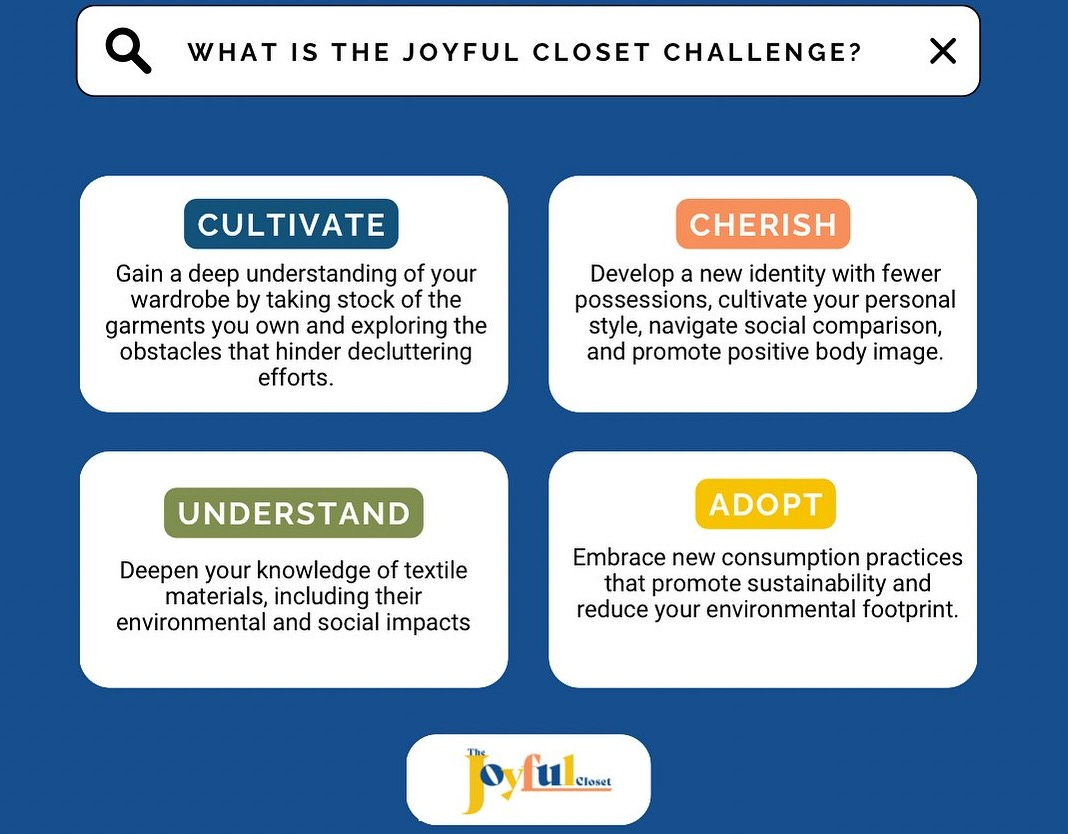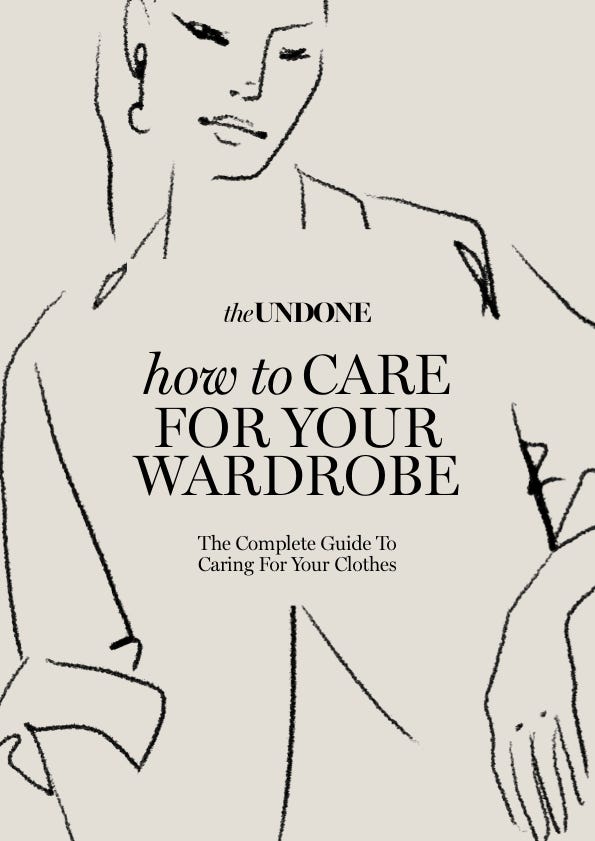December in Fashion, Condensed.
Eleven industry insiders share what makes them hopeful about the future of fashion in 2024.
Hello there,
Happy New Year! Around this time last year, I asked 12 fashion industry experts to share their sustainability predictions for 2023, which you can read here. Instead of looking back at what has been a turbulent year (understatement of the decade), I want to look forward to 2024 with a sense of optimism.
This year, I asked 11 fashion thought leaders: What makes you hopeful about the future of the fashion industry in 2024? I hope their responses give you food for thought as we look to a new year and give you a sense that things can always get better.
JD Shadel, Writer and Editor-at-Large at Good On You
What makes the word hope so powerful: true hope is premised on painful realities with a vision for what a more just future could look like. Reflecting on 2023, it's clear that the comfortable conversation of "sustainability" in the fashion industry continues to leave human rights out of that "sustainable fashion" picture. To anyone who spends any amount of time browsing online, it seems obvious that brands would far rather talk about their growing percentage of recycled water bottle polyester than the impact that exploitative wages and runaway overproduction of cheap clothing have on the world's estimated 75 million garment workers.
The hope is that growing consumer awareness of what garment workers experience — something that was increasingly in headlines in 2023 — will translate to solidarity and growing consumer outrage that leads to justice for the technically skilled and creative craftspeople who make the world's clothes.
I, for one, won't be supporting any brand with "equality", "love" and empowerment Pride gear if they've not made sure that those same values extend beyond cheap consumerism and apply throughout their supply chains. I hope in 2024 that consumers demand justice for garment workers.
Safia Minney MBE, Founder of Fashion Declares, Speaker & Advisor
I hope that in 2024 the ‘S’ of ESG, the ‘Social’ starts to mean something! I hope that fashion wakes up to how poor buying practices and prices are causing great suffering, hardship and physical vulnerability to people working in our supply chains - especially women - in the global south, just as the impacts of climate change are causing greater sickness and loss of income. Surely, the ‘Social’ issue needs to be addressed as firmly as important as diversity, inclusion, and equality in our head offices?
Ayesha Barenblat, Founder of Remake
My hope for the fashion industry in 2024 is to see more commitment from lawmakers to regulate the fashion industry's excesses, particularly in terms of overproduction, the growing reliance on fossil fuels and human rights violations. I am hopeful that mandatory human rights due diligence and bills like the FABRIC Act that push for up liability will make progress where voluntary efforts have failed, to provide a remedy for fashion workers on the frontlines of growing inequity and the climate crisis.
Thulsi Narayanasamy, Director of International Advocacy at Worker Rights Consortium
2024 will be the closest we’ve ever been to a collective recognition of the failure of brands’ voluntary commitments in ensuring the basic rights of the people who make their clothes. The fallacy of having allowed brands free rein to act as they please, saying they respect rights while actively driving down workers’ wages and conditions will be obvious to more people than ever before. With new human rights due diligence laws coming into play, the accountability dial will shift for brands that have long relied on presenting issues affecting garment workers as outside their control rather than a direct result of their business practices.
Jane Shepherdson, Sustainable Fashion Industry Expert
I think the impact of European legislation will start to be felt by global fashion brands and will at the very least limit the sustainability claims that they currently make. I am also hearing much more enthusiasm around repair and circularity as the next generation kicks the addiction to consumption. Perhaps 2024 will be a turning point?
Odunayo Ojo, Fashion Journalist, Fashion Roadman
From a brand perspective, I think people will support more emerging brands next year. A lot of the luxury brands have been hiking their prices to unattainable heights. This has happened in conjunction with raised awareness around the inhumane practices of luxury brands akin to their fast fashion counterparts. This has started to affect brand loyalty to many luxury brands.
However, from an industry perspective, I don't think anything will change. The fashion industry rarely changes unless something drastic happens. Remember during the pandemic when all the brands said they would produce "slower" and change the way they do things... well they've all gone back to normal like nothing happened.
Liv Simpliciano, Policy and Research Manager, Fashion Revolution
“With the passing of the Corporate Sustainability Due Diligence Directive, I am hopeful that the era of major fashion brands setting their own human rights and environmental standards is finally over. Major fashion brands selling in the EU will, for the first time, be legally responsible for addressing human rights and environmental challenges in their global supply chains. At Fashion Revolution, we call for the final CSDDD text (due around March 2024) to include meaningful human rights and environmental protections.
Our Good Clothes Fair Pay campaign continues to call for fashion brands to be held accountable by law for ensuring living wages for workers in their supply chains. Due diligence legislation that falls short of fair pay fails to deliver garment worker justice. I hope the new year rings in greater action and collaboration from major brands to grow the availability of clean energy in garment-producing countries - recognising their immense purchasing power and responsibility - to boost the sector's transition to renewable energy.
Amma Aburam, Freelance Writer and Founder of Style and Sustain Mag
What makes me hopeful about the future of fashion is seeing and hearing about more Global South initiatives and solution leaders who are tackling the impact of fast fashion in their local communities. Although elevating their voices is key, the industry needs to take it a step further by funding and fully supporting their solutions because they are brilliant ways forward that benefit us all. The industry needs to elevate AND take action, I hope to see that in 2024.
Emma Hakansson, Founder and Director of Collective Fashion Justice
The focus on legislation and policy, and the industry’s growing (even if slowly) willingness to recognise that sustainability must include the wellbeing of people and our fellow animals, not the planet alone, gives me hope. There can be no more inactive hoping that the industry will change: now’s the time to require mandatory, holistic action. I think there will be more of that in 2024.
Bianca Foley, Founder and Host of Sustainably Influenced
For sustainable fashion practices to become the norm, more funding and innovation are needed to improve supply chains. I'm hoping to see more brands looking at tech solutions that will help to facilitate the change we so desperately need in the fashion industry.
Alden Wicker, Fashion Journalist and Founder of EcoCult
I've been so pleased to see two large states, New York and California, pass legislation banning all types of PFAS in everyday apparel. PFAS is a class of chemicals also known as "forever chemicals" because they are so persistent and accumulate in our bodies and the environment. They've been linked to several types of cancer, birth defects & other reproductive harms, and immune suppression, among other things. Yet they're de rigueur for outdoor gear and stain-resistant clothing (including children's uniforms).
The EPA estimates there are around 12,000 types of PFAS. And they're used for so many different things, they very easily sneak into fashion's supply chain and onto our clothes. I'm hopeful that even the fashion companies who have done absolutely nothing to deal with the real risk of hazardous chemicals in clothing will be forced to get to know their supply chain because of this legislation in two of America's biggest markets, or face consequences.
We've also seen the success of two different lawsuits around toxic fashion: the American Airlines attendants against the maker of their uniforms, Twin Hill, and Thinx for having PFAS in its period panties. I have it on good authority more lawsuits about toxic fashion are on the way. Non-toxic fashion is moving from a nice-to-have to a must-have — a compliance issue. And that's when the greenwashing stops and the real work happens.
Things I Didn’t Write
The Dirty Secrets of the Global North’s Old Clothes by Daniel Penny for New Lines Magazine (long read)
Sustainable Fashion Needs To Take A Leap Of Faith. Who Will Lead The Herd? by Rachel Cernansky for Vogue Business
COP Petition Steers Fashion Toward More Fossil Fuel Use—Here’s Why by Brooke Roberts-Islam for Forbes
The Zero-waste Wardrobe: Five Writers Try Sustainable Fashion Fixes by Chitra Ramaswamy, Emma Beddington, Ammar Kalia, Leah Harper and Elle Hunt for The Guardian
The Year Ahead: Why Fashion Can No Longer Ignore the Climate Crisis by BoF and McKinsey
‘Substantial Volume’ Of Clothing Tied To Uyghur Forced Labour Entering EU, Says Study by Amy Hawkins for The Guardian
Why One H&M Skirt Traveled 15,000 Miles After It Was Brought Back to the Store by Daphne Chouliaraki Milner for Atmos
Shein’s IPO And Cop28: The Perfect Encapsulation Of Our Climate Failures by Maxine Bedat for Fast Company
The Greenwashing Of Wool, Explained by Marina Bolotnikova for Vox
The To-Do List
Crude Couture: Fashion Brands’ Continued Links to Russian Oil by Changing Markets Foundation
This is a follow-up to Changing Market’s Dressed to Kill report from 2022, which found that fashion’s reliance on Russian oil is indirectly fuelling the Russian economy on the war in Ukraine. This new report revisits the brands linked to polyester producers who buy up cheap Russian oil, discovering that little has changed in the past year. Only two fashion companies out of 50 identified in Dressed to Kill have cut ties with these polyester producers, says Changing Markets.
The Joyful Closet Consumption Challenge by the Mindful Dresser
The Joyful Closet Consumption Challenge is a year-long experiment, accompanied by a free online learning platform that includes instructional videos, interactive discussion forums, practical exercises, and curated resources. The goal of the challenge is to improve your connection to your clothes, rethink consumption patterns towards more conscious options, and have fun doing it.
How to Care for Your Wardrobe by The Undone
I came across this comprehensive clothing care guide from minimalist Australian retailer The Undone. It covers cleaning, storage, maintenance and repairs for everything from bags and jewellery to clothes and shoes. Well worth downloading and keeping for your next Spring Clean!
Until next month,
Meg








